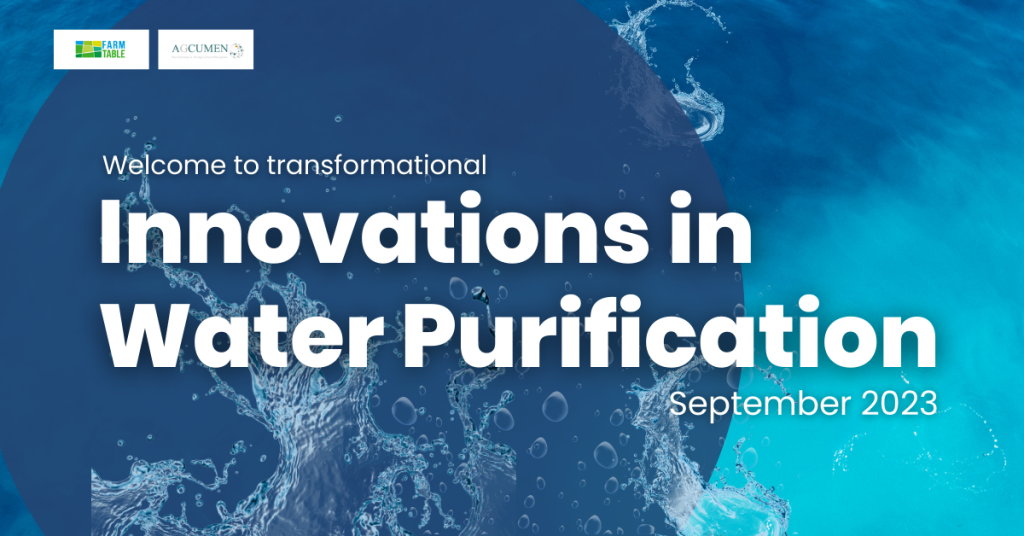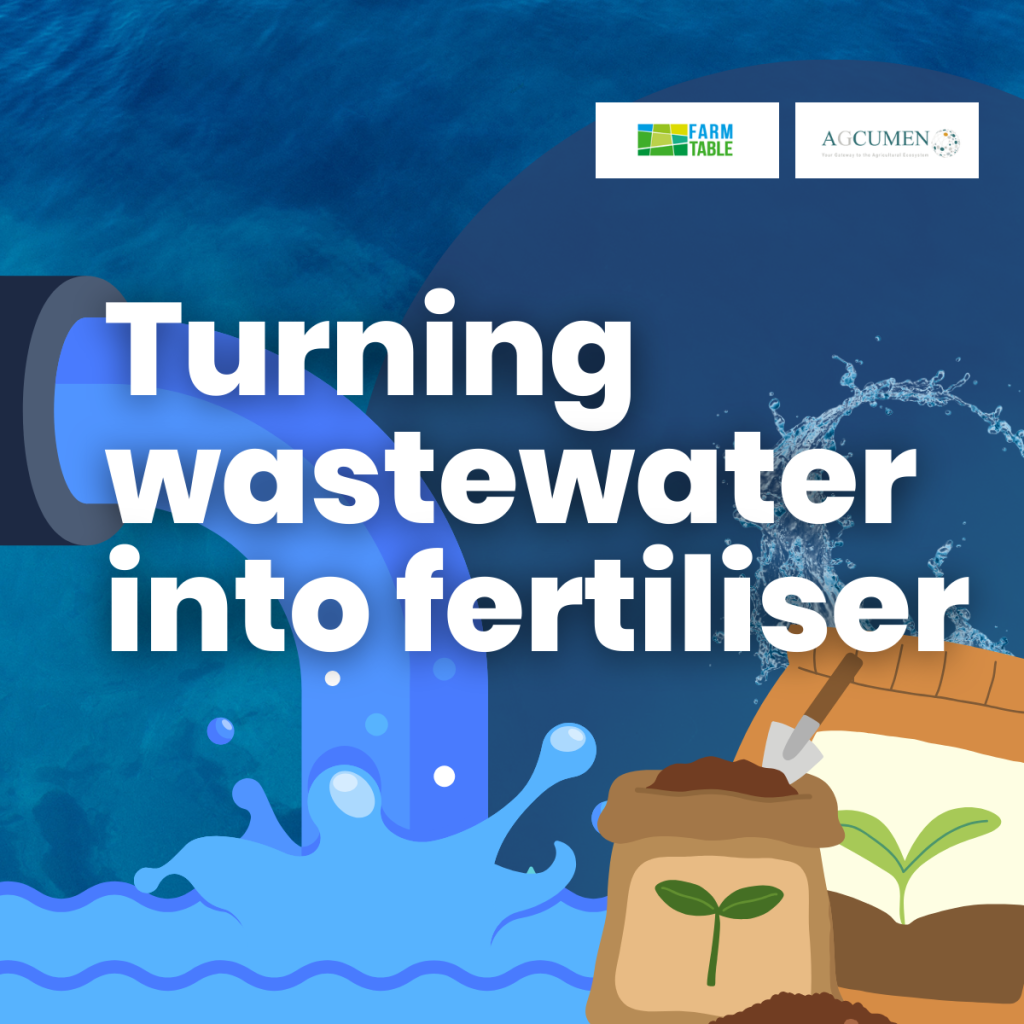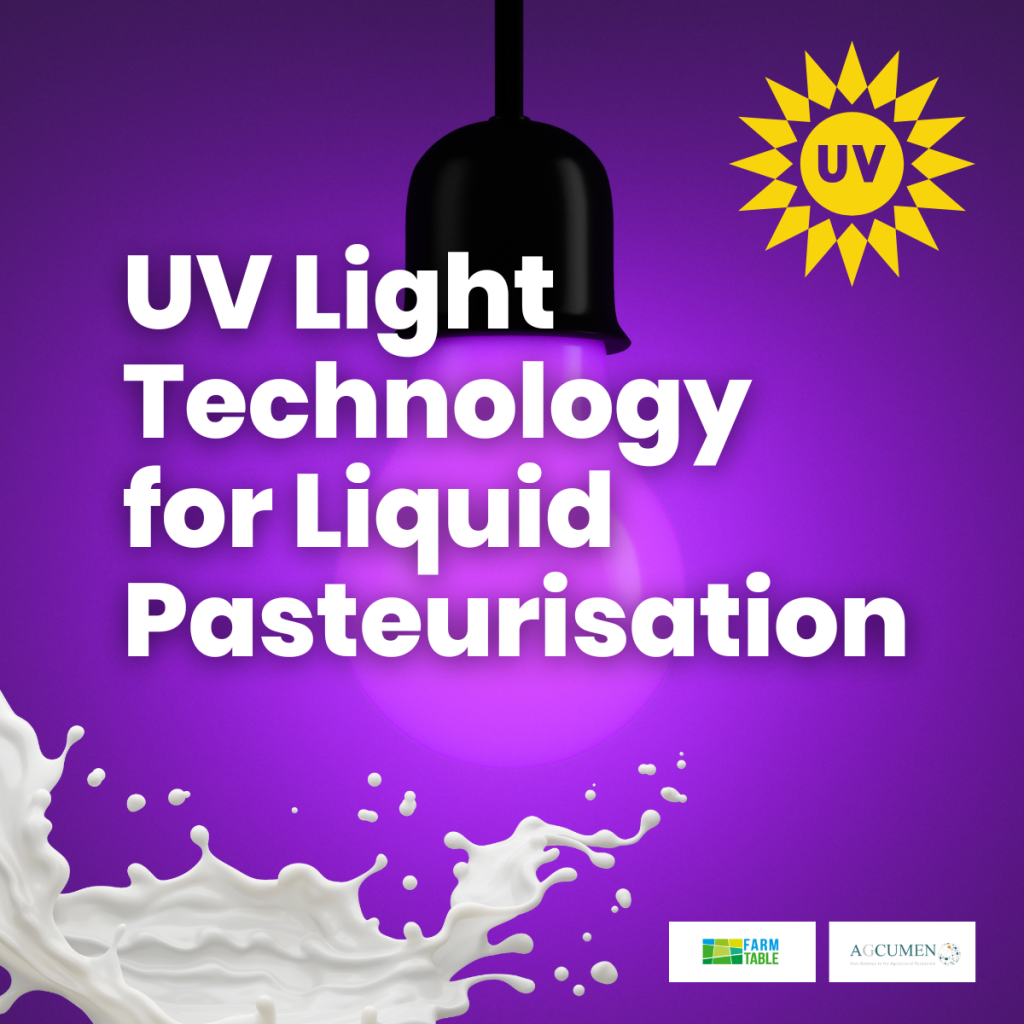9 of the latest advances in Water Purification Technologies
In this month’s Ag Innovation focus we are covering the latest water purification technologies that will improve water storage, cleaning water of PFAS chemicals, creating water from desert air, and even converting wastewater into fertiliser.

Turning Wastewater into Valuable Fertiliser
In the past, the production of nitrogen for fertiliser has been very energy intense as well as a major source of carbon dioxide emissions. A new study is now exploring a better solution: extracting nitrogen from waste ammonia found in water during treatment processes.
This innovative process, known as air-stripping, involves raising the temperature and pH of water to convert ammonia into a gas. The collected gas is then transformed into concentrated ammonium sulfate, a valuable fertiliser.
The air-stripping method emits far fewer greenhouse gases and requires less energy compared to the traditional nitrogen-producing process. This not only helps in combating climate change, but also makes the production of fertiliser from wastewater economically viable.
Not only does this approach eliminate wasteful energy consumption and reduce greenhouse gas emissions it also opens up new revenue streams for utilities and water treatment facilities. The low production cost of fertiliser chemicals from wastewater allows producers to sell their product at affordable prices and still make a profit.
Furthermore, water treatment facilities can benefit from energy savings by air-stripping ammonia from wastewater before it re-enters the treatment process. This reduces treatment time and the resources required.
While air-stripping may produce smaller amounts of fertiliser compared to the current method, it plays a crucial role in sustainable commercial agriculture and prevents water pollution. It is a significant step towards recovering and reusing the vast amounts of nitrogen needed for global food production.
Transforming wastewater into a valuable resource is an important endeavour that will nurture a more resilient and sustainable agricultural industry.
See the original article here.

Using UV Lights to Pasteurise Liquid Foods
Scientists have developed a new pasteurasation technique called Raslysation which allows liquid foods to be pasteurized without the need for excessive heat and its negative consequences.
Developed by Danish firm Lyra, Raslysation utilises UV lights and a turbulent flow pattern to effectively eliminate harmful microorganisms in liquid foods. This means that products like milk, juice, and even wine can be made safer without compromising their quality by depleting nutrients and vitamins.
But the benefits of Raslysation don’t stop at food. Novozymes, a renowned producer of enzymes, has also embraced this new technology to ensure their products are bacteria-free.
Not only is Raslysation a game-changer in terms of safety and quality, it’s also a win for the environment and your wallet. By reducing energy consumption by up to 90% and minimising the need for excessive water usage, this technology is a game-changer for sustainability and cost-saving measures.
The dairy industry, always on the cutting edge of innovation, has already embraced Raslysation with open arms. Arla Foods, a Danish cheese plant, has implemented the technology with great success.
With UV lights at the forefront, liquid pasteurisation has reached new heights of efficiency. Say goodbye to heat, excessive energy usage, and compromised product quality. Say hello to a future where liquid foods are safer, more efficient, and better for our planet. Raslysation has the potential to revolutionise the way we ensure the safety and quality of our liquid foods.
See the original article here.

New water treatment to remove PFAS from drinking water
Introducing the innovative UBC water treatment that eliminates harmful “forever chemicals” for good.
Say goodbye to the dangerous chemicals lurking in your drinking water. Scientists at the University of British Columbia (UCB) have created a cutting-edge water treatment that safely and permanently removes “forever chemicals.”
These insidious substances, formally known as PFAS (per- and polyfluoroalkyl substances), are commonly found in products that claim to be stain-resistant or non-stick. However, they have been linked to a range of serious health problems, including hormonal disruption, cardiovascular disease, developmental delays, and even cancer.
But now, UCB engineers have come to the rescue. They have developed a new adsorbing material that can effectively trap and hold all the PFAS present in your water supply. Utilising state-of-the-art electrochemical and photochemical techniques, these harmful chemicals are completely destroyed.
While there are other treatments currently available on the market, they fall short in capturing all the different types of PFAS or require lengthy treatment processes. In contrast, UCB-developed adsorbing media boasts an astonishing capture rate of up to 99% for PFAS particles. Even more impressive, it can be regenerated and potentially reused, making it a sustainable solution for years to come.
See the original article here.
New glyphosate filter to remove herbicide glyphosate from groundwater
Scientists at Vienna University of Technology has developed innovative metal-organic frameworks (MOFs) that can selectively and efficiently eliminate glyphosate. These MOFs, composed of metal oxide clusters and organic molecules, create a porous network with an astonishing surface area of up to 7000 m²/g. This makes them ideal for capturing molecules from air and water, including CO2, inorganic salts, and organic pollutants.
In collaboration with researchers from the University of Northern British Columbia, the team conducted experiments on the adsorption of glyphosate from groundwater. The results were astounding. The new material removed three times as much glyphosate in just a fraction of the time compared to the best adsorbent currently available.
Through computer simulations conducted at the Technion Institute of Technology in Israel, the team made another ground breaking discovery. The removal of organic linkers in the MOFs resulted in new metal sites. These sites formed chemical bonds with glyphosate, allowing for faster diffusion of the target molecule. These bonds are strong enough to quickly and efficiently adsorb glyphosate and similar compounds. However, they are also weak enough to be easily removed with a simple sodium chloride salt solution, enabling the MOFs to be used multiple times.
This innovative research has the potential to revolutionise the way we tackle herbicide contamination in groundwater. See the original article here.
Newly developed catalyst to generate electricity and drinking water
Breakthrough Discovery: Creating Hydrogen and Clean Water Simultaneously
Researchers at the University of Alberta have stumbled upon an incredible breakthrough in technology. They have uncovered a catalyst that has the power to produce hydrogen whilst simultaneously purifying water.
The catalyst, made from non-toxic and abundant materials, is both simple and affordable to produce. It can be used with any type of water, easing the energy-intensive process of water electrolysis by requiring lower temperatures and less energy input. And with minimal oxygen emissions, it’s much safer than current methods.
This newfound catalyst can be used in fuel cells to split water into hydrogen and oxygen, then recombine them to generate electricity. It’s a game-changer in the world of energy.
A company called Dark Matter Materials, founded by the researchers behind this discovery, is gearing up to bring this new technology to the masses. Already garnering interest from local energy and agricultural sectors, as well as multinational companies everywhere, this innovation is set to revolutionise the way we produce hydrogen and purify water. See the original article here.
Salty gel could harvest water from desert air
Engineers at MIT have created an extraordinary hydrogel material that has the ability to absorb an unprecedented amount of moisture from the air, even in the harshest desert-like conditions. It is well placed to be used for water harvesting in drought-prone and desert regions.
The potential of this super absorbent gel is remarkable. Once scaled up, it can passively collect water vapor from the air. This captured moisture can then be heated and condensed, resulting in ultrapure or even drinking water.
But the applications don’t stop there. The hydro gel can also be integrated into air conditioning units, serving as an energy-efficient dehumidifying element.
The secret behind this revolutionary technology lies in the combination of hydrogel and lithium chloride. By infusing the hydrogel with lithium chloride, it can absorb and retain an extraordinary amount of moisture – even in very dry conditions with only 30 percent relative humidity.
Supported by the prestigious U.S. Office of Energy Efficiency and Renewable Energy and the Swiss National Science Foundation, this research is poised to make a true impact.
Learn more about this game-changing invention from the Massachusetts Institute of Technology (MIT) by visiting their website here.
Using fungi and bacteria for optimal water treatment
Researchers from the Ministry of Natural Resources in China and the Leibniz-Institute of Freshwater Ecology and Inland Fisheries have discovered a natural fungus-bacteria consortium that can efficiently and consistently remove nitrate from water. Nitrogen pollution is a massive issue in freshwater and wastewater, and this breakthrough offers a promising solution.
Denitrification, the process of converting nitrate and nitrite into gaseous nitrogen, occurs naturally through organisms living in water bodies. In the presence of oxygen, this process becomes even more cost-effective and scalable for water treatment.
What makes this discovery exciting is that fungi and bacteria combinations have been largely unexplored until now. Fungi, in particular, are incredibly resilient to environmental stressors like high temperatures and acidic pH levels.
The researchers identified a natural bacteria-fungi consortium from mariculture that can remove nitrate from water with an efficiency of up to 100% in oxygen-rich environments. The denitrification efficiency, which measures how effectively microorganisms can convert nitrogen into molecular nitrogen and nitrogen oxides, is an impressive 44%.
While practical applications are yet to be developed, this breakthrough opens up a world of possibilities for water purification using biotechnology. See the original article here.
Using plant tannins to filter microplastic from drinking water
Recent research from the University of British Columbia (UBC) has uncovered a new method using natural plant compounds called tannins. By adding tannins to a layer of wood dust, a powerful filter is created that effectively captures almost all microplastic particles present in water.
Microplastics pose a significant threat to public health, infiltrating our tap water sources. While current solutions are costly and challenging to implement on a large scale, the team at UBC believes they have found the answer. With the right industry partner, their filter can easily be scaled up or down for commercial and industrial use.
To put their method to the test, the team analysed microplastic particles released from popular polypropylene-based tea bags. Astonishingly, their “bioCap” filter trapped between 95.2% and 99.9% of plastic particles in a column of water, depending on the type of plastic. Furthermore, studies conducted on mouse models demonstrated that the process effectively prevents microplastics from accumulating in organs.
Discover how nature’s own filter can revolutionize the way we combat microplastics. Read the full report from the University of British Columbia and Sichuan University now. See the original article here.
Cleaning water with ‘smart rust’ and magnets
Did you know that rust can both dirty and clean water? The difference lies in the type of rust. Researchers at the American Chemical Society have developed super paramagnetic nanoparticles that can effectively remove contaminants from water sources. These tiny spheres made from magnetic iron oxide are drawn to magnets but not to each other.
Using a clever design, the nanoparticles have been modified to grab onto pollutants like microplastics, spilled oil, and chemicals. When a magnet is applied, it can easily pull these nanoparticles out of the water, along with any attached pollutants.
The team has also engineered the nanoparticles to effectively capture trace contaminants, such as estrogen hormones, which pose a threat to aquatic life. By coating the particles with two different molecules—one to trap the hormone and the other to attract its negatively charged parts—they create billions of ‘pockets’ that securely trap the estrogen.
Learn more about this game-changing breakthrough here.
From transforming wastewater into important fertiliser for crops, to introducing UV light pasteurisation, to remove PFAS and the incredible breakthrough of producing hydrogen while simultaneously cleaning water– these are all revolutionary technologies that will fundamentally transform our approach to environmental sustainability & water purification.